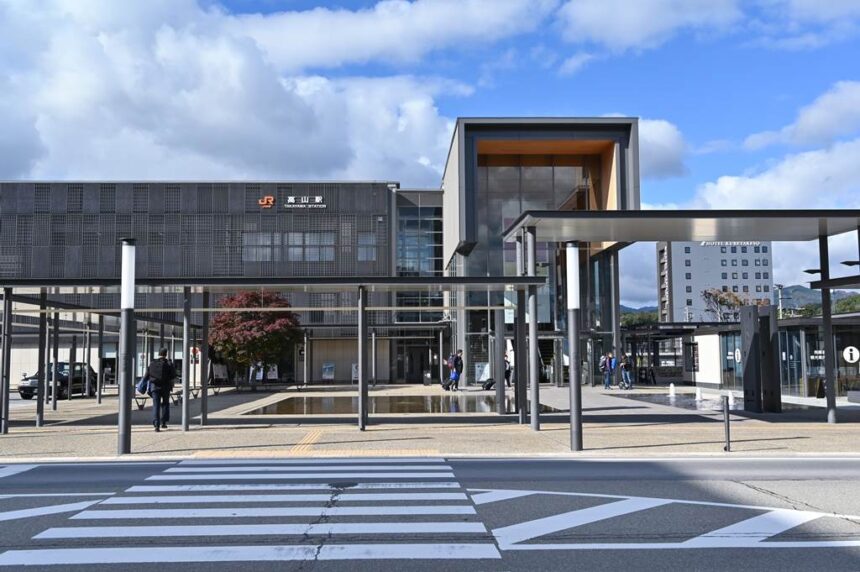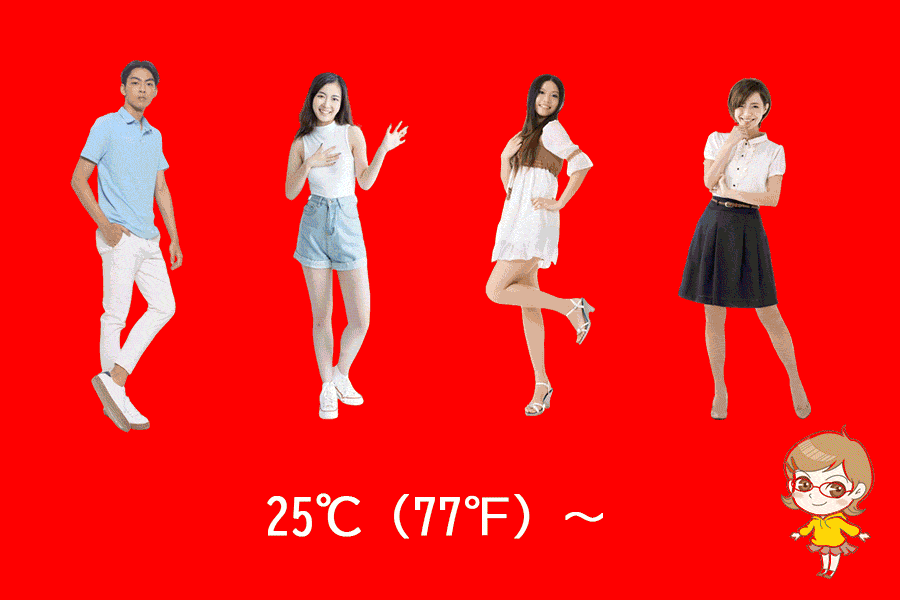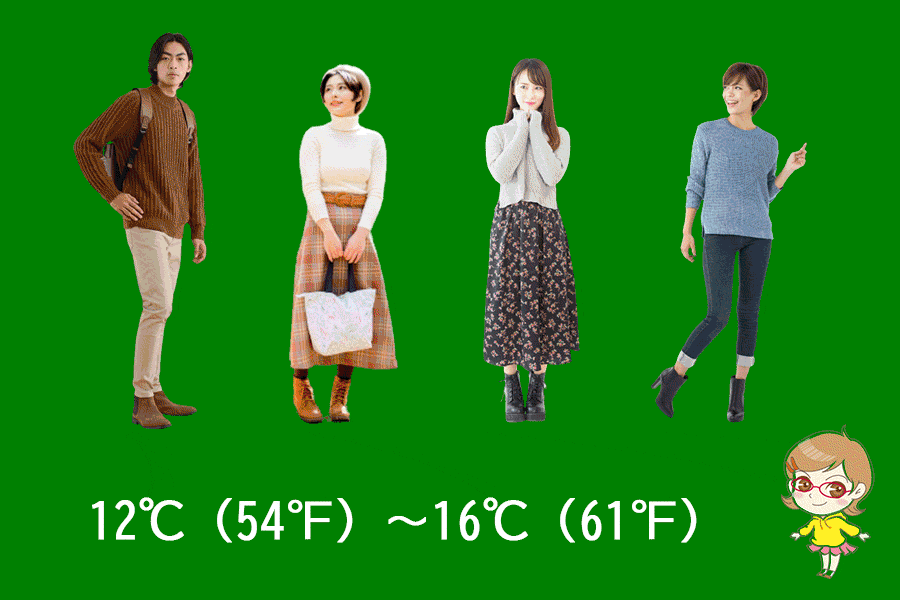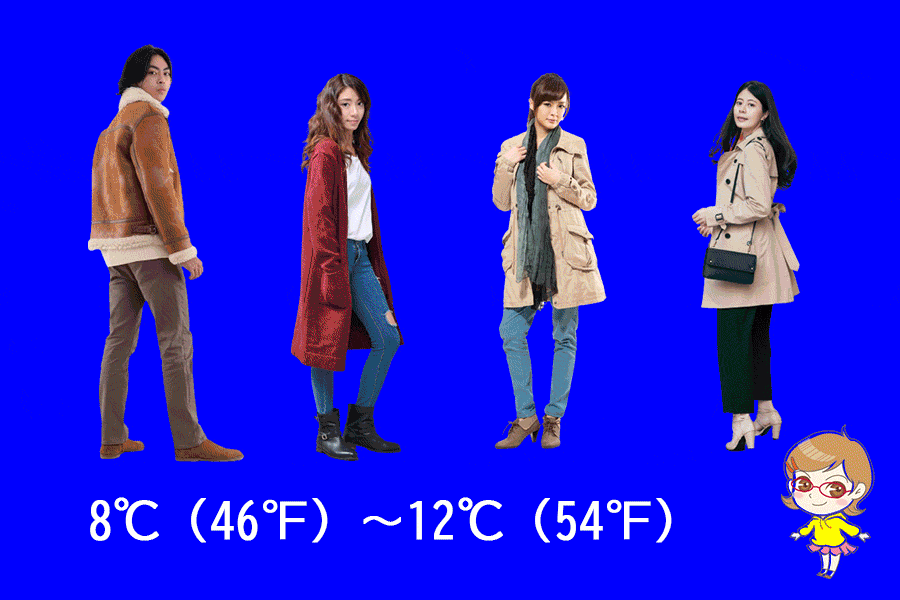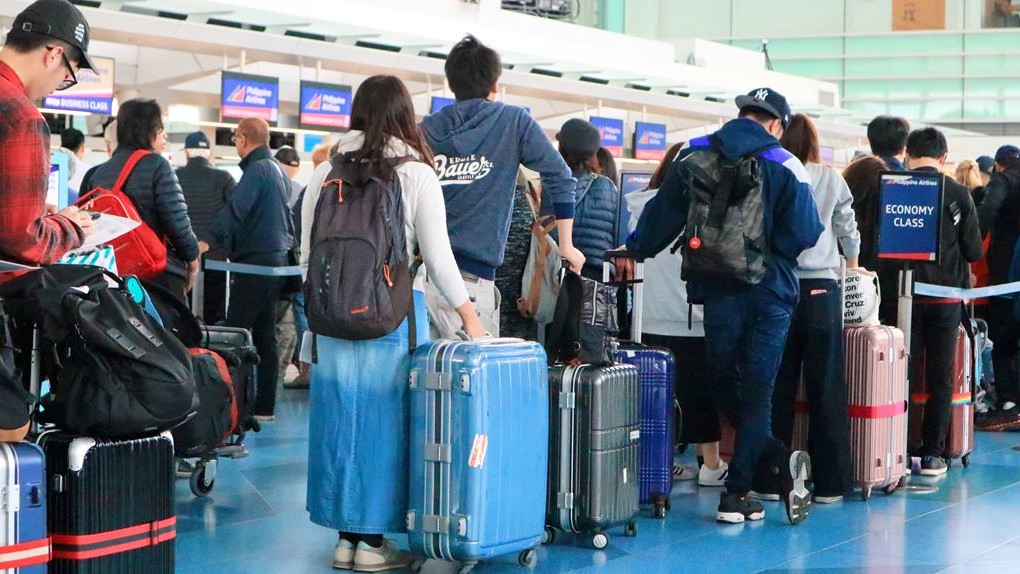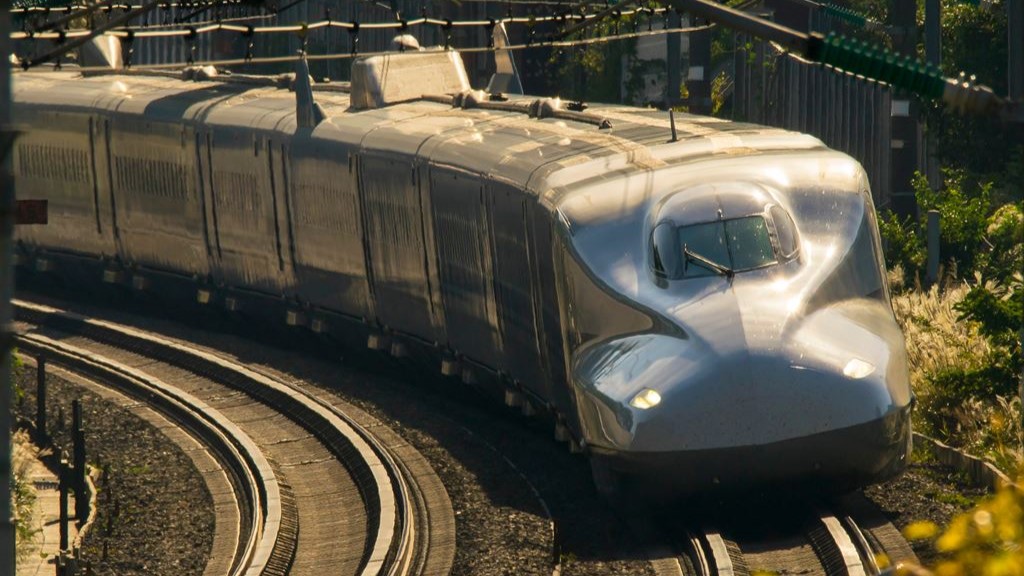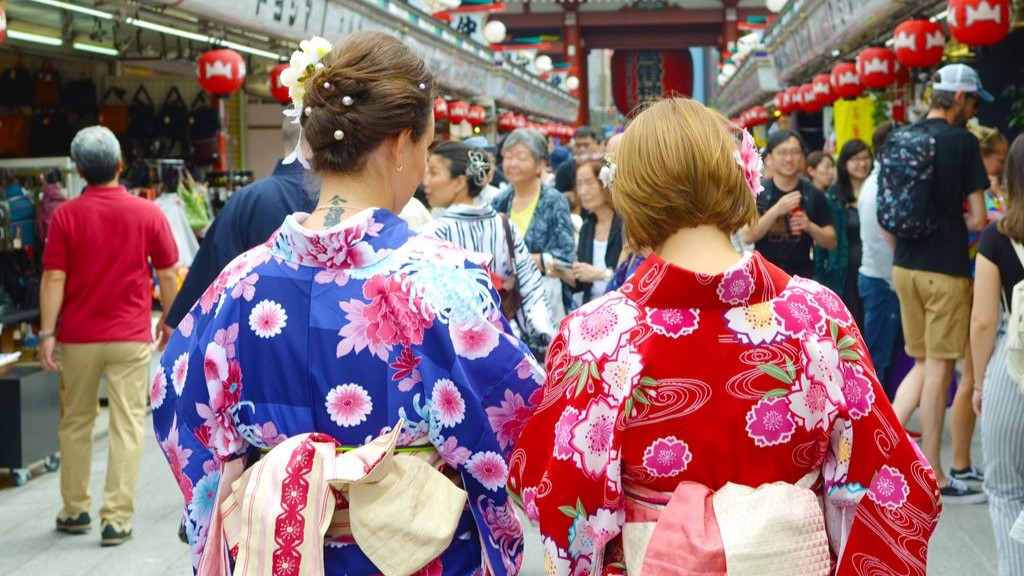1-22-2 Showamachi, Takayama City, Gifu Prefecture 506-0053 MAP
↓ Click to jump to the relevant section.
| Current Weather | Annual Weather | Tourist Attractions |
| Baggage Deposit | Hotels |
Current weather and clothing

The weather information shown here is the information closest to the station in question. Please note that there may be slight differences.
Yearly temperature changes and recommended clothing
Clothing recommendations for each temperature range
When traveling in Japan with the following average temperatures, the recommended clothing is as follows:
Monthly changes in temperature, precipitation, and snowfall (1991~2020 average, Japan Meteorological Agency survey)
| Jan. | Feb. | Mar. | Apr. | May | Jun. | Jul. | Aug. | Sep. | Oct. | Nov. | Dec. | |
| temperature(°C) | -1.2 | -0.6 | 3.4 | 9.7 | 15.6 | 19.7 | 23.5 | 24.4 | 20 | 13.5 | 7.1 | 1.6 |
| precipitation(mm) | 101.9 | 93.5 | 122.5 | 123.9 | 125.2 | 170.4 | 260.9 | 197.9 | 225.9 | 155.5 | 94.4 | 104.4 |
| snowfall(cm) | 117 | 90 | 29 | 3 | — | — | — | — | — | — | 2 | 66 |
Winter
December
December is a cold and snowy month, with an average temperature of 1.6°C. The weather is generally cloudy with frequent snowfall, with an average precipitation of 104.4 mm. It is recommended to wear warm and waterproof clothing such as down jackets, thick sweaters, and warm pants for men and women. Women can also wear boots and a warm hat.
January
January is the coldest month of the year in Takayama Station. The average temperature is -1.2°C. Snowfall is common in January, and it is often accompanied by strong winds. The average precipitation in January is 101.9 mm. The days are short, with only around 9 hours of daylight.
If you’re planning to visit Takayama Station in January, make sure to bring plenty of warm clothes, including a thick coat, gloves, a hat, and a scarf. Layering is key to stay warm, so bring clothes that can be easily layered on top of each other. Warm boots with good traction are recommended as well.
February
In February, the average temperature in Takayama Station is -0.6°C, which is slightly warmer than January. However, it is still a very cold month, and snowfall is common. The average precipitation in February is 93.5 mm.
Similar to January, warm clothing is essential for February. Make sure to bring a thick coat, a hat, gloves, and a scarf. Layering is key to stay warm, so bring clothes that can be easily layered on top of each other. Warm boots with good traction are recommended as well.
Spring
March
March is still a cold month in Takayama Station, but it marks the transition to spring. The average temperature in March is 3.4°C. Snowfall is still possible in March, but it is less common. The average precipitation in March is 122.5 mm.
If you’re visiting Takayama Station in March, bring warm clothing, including a coat, gloves, a hat, and a scarf. However, you may not need to bring as many layers as in January or February. You should also bring some lighter clothes for when the temperature starts to warm up during the day. Warm boots with good traction are still recommended.
April
April marks the beginning of spring in Takayama Station. The average temperature in April is 9.7°C. April is a relatively dry month, with an average precipitation of 123.9 mm.
In April, you can start to wear lighter clothes, such as a light jacket or sweater, during the day. However, make sure to bring a warmer coat for the colder nights. Comfortable shoes for walking are recommended.
May
May is a pleasant month in Takayama Station. The average temperature is 15.6°C, and the days start to get longer. May is a relatively dry month, with an average precipitation of 125.2 mm.
If you’re visiting Takayama Station in May, bring light and comfortable clothes for the daytime, such as a t-shirt, shorts, or a skirt. However, make sure to bring a warmer layer for the cooler nights. Comfortable shoes for walking are still recommended.
Summer
June
June in Takayama Station is a warm and humid month; the average temperature in June is 19.7°C. June is a rainy month, with an average rainfall of 170.4 mm.
If you plan to visit Takayama Station in June, pack light and breathable clothing. However, the mornings and evenings can be cold, so bring a light jacket that can be layered. An umbrella is essential.
July
July is one of the warmest months in Takayama, with an average temperature of 23.5°C. The weather is generally sunny, but there is a chance of rain, with an average precipitation of 260.9 mm. It is recommended to wear light clothing such as T-shirts and shorts for men and women. Sunscreen, sunglasses, and a hat are also recommended.
August
August is the hottest month of the year in Takayama, with an average temperature of 24.4°C. It is also a rainy month, with an average precipitation of 197.9 mm. The weather is generally hot and humid, so it is recommended to wear light and breathable clothing, such as cotton T-shirts and shorts. Women can wear sundresses, while men can wear linen shirts and pants. It is important to stay hydrated and avoid prolonged exposure to the sun.
Autumn
September
September is a comfortable and mild month, with an average temperature of 20°C. The weather is generally sunny with a few occasional rain showers, with an average precipitation of 225.9 mm. It is recommended to wear light clothing such as long-sleeved shirts and pants for men and women, as well as a light jacket or cardigan for cooler evenings.
October
October is a cool and comfortable month, with an average temperature of 13.5°C. The weather is generally sunny with a few occasional rain showers, with an average precipitation of 155.5 mm. It is recommended to wear warm clothing such as long-sleeved shirts, sweaters, and jackets for men and women. Women can also wear tights or leggings with skirts or dresses.
November
November is a chilly and dry month, with an average temperature of 7.1°C. The weather is generally sunny with a few occasional snow flurries, with an average precipitation of 94.4 mm. It is recommended to wear warm clothing such as sweaters, jackets, and warm pants for men and women. Women can also wear scarves and gloves.
Recommended tourist destinations
The Historic Villages of Shirakawa-go Gassho Style Houses
Ogimachi, Shirakawa-mura, Ono-gun 501-5627 Gifu Prefecture
A farming village with thatched-roof villages known as gassho-zukuri, which have been recognized as a World Heritage site. The area is crowded with tourists as a place where one can feel the original landscape of Japan. A panoramic view of the village can be seen from the Hagicho Castle Ruins Observatory. Some Gassho-zukuri houses can be viewed inside, including the Wada House, which is a National Important Cultural Property.
Hida Minzoka Mura Folk Village (Hida no Sato)
1-590 Kamiokamotomachi, Takayama 506-0055 Gifu Prefecture
Hida Takayama’s village museum “Hida-no-sato” is a reconstruction of a valuable old Hida minka, including a gassho-zukuri style house, and recreates nostalgic farm village life and seasonal events that have been handed down in Hida from the olden days. Visitors can also enjoy a variety of hands-on crafts.
Sanmachi Suji
44 Kamisannomachi, Takayama 506-0846 Gifu Prefecture
A row of Edo period machiya townhouses east of the Miya River. Long-established sake breweries, miso warehouses, and print stores line the streets. There are also many restaurants where you can enjoy local delicacies such as Mitarashi dumplings and Hida beef.
Gero Onsen
Yunoshima, Gero 509-2207 Gifu Prefecture
Gero Onsen is one of the most famous hot spring resorts in Japan. It is also called the “hot spring of beauty” because of its alkaline nature and soft texture. In addition to the open-air hot springs on the riverbed, there are also footbaths, allowing visitors to enjoy the hot springs in a variety of ways.
Shin-Hotaka Ropeway
Okuhidaonsengo Kansaka, Shinhodaka, Takayama 506-1421 Gifu Prefecture
The only gondola in Japan to have a double-decker gondola with a total length of approximately 3,200 m. From the observation platform at Nishi-Hotakaguchi Station, visitors can enjoy a 360° panoramic view of the mountains of the Northern Alps, including Mt.
Takayama Jinya
1-5 Hachikemmachi, Takayama 506-0012 Gifu Prefecture
This is the place where deputy officials held their offices during the Edo period. The 49-mat hall used for important ceremonies, the office, the tea ceremony room, and the kitchen have been recreated as they were in those days. A morning market is also held in front of the camp.
Takayama Showa Museum
6 Shimo Ichinomachi, Takayama 506-0843 Gifu Prefecture
Inside the museum, a retro townscape from the 1950s is reproduced. At the entrance, there is an old-fashioned candy shop, and as you enter the back of the museum, a midget (three-wheeled automobile) is displayed in the front. Along the street are a barbershop, a photo studio, and a general store, where visitors can enjoy seeing and touching Japanese Showa culture. Visitors can also shop at a candy shop.
Hida Kokubun-ji Temple
1-83 Sowamachi, Takayama 506-0007 Gifu Prefecture
This historical temple was built in 746 by an imperial order of Emperor Shomu. Within the temple grounds, there is a statue of Yakushi Nyorai, an important cultural property. In addition, there is a large gingko tree that is over 1,200 years old, which attracts many tourists who come to take pictures of the gingko tree, the temple, and the three-story pagoda in the fall.
Norikura Summit Tatamidaira(Norikura Skyline)
Nyuukawacho Iwaitani Mt. Norikura, Takayama 506-2254 Gifu Prefecture
A sightseeing mountain road running along the border with Nagano Prefecture. To protect the nature, general vehicles are not allowed to drive on the road, so a shuttle bus will take you to a grassland in the mountainous area at an altitude of 2,700 m. The road has a walking trail in the vicinity, where you can enjoy a long hike through alpine flora. There are well-maintained walking trails in the vicinity, allowing visitors to enjoy hiking while viewing alpine flora for a long time.
Great Limestone Cave of Hida and Ohashi Collection Museum
1147 Nyukawacho Hiyomo, Takayama 506-2256 Gifu Prefecture
The cave is approximately 800 meters long and is divided into three areas. This area is said to have been the sea 250 million years ago, and visitors can see rare stalactites. The caves are illuminated, allowing visitors to walk around and admire the powerful stalactites in a fantastic atmosphere.
Where to leave your luggage
The coin lockers at Takayama Station are located at the right side of the ticket gate, down the stairs, and further to the right when you exit the station. The large space is marked by the words “COIN LOCKER” and an icon.
On the left side of the east exit of Takayama Station is the bus center of the Nouhi Bus Company, where coin lockers are also located.
Recommended hotels and inns
TOKYU STAY Hida-Takayama Musubi no Yu
4-301 Hanasatomachi, Takayama 506-0026 Gifu Prefecture
1-minute walk from Takayama Station
Hotel class: 4
Hotel style: Business
Check Rates & Availability:
>> See on Tripadvisor
>> See on Trip.com
>> See on Expedia
Oyado Koto no Yume
6-11 Hanasatomachi, Takayama 506-0026 Gifu Prefecture
3-minutes walk from Takayama Station
Hotel class: 4
Hotel style:Historic Hotel , Charming
Check Rates & Availability:
>> See on Tripadvisor
>> See on Trip.com
>> See on Expedia
Ryokan Tanabe
58 Aioi-cho, Takayama 506-0014 Gifu Prefecture
6-minutes walk from Takayama Station
Hotel class: 4
Hotel style:Historic Hotel , Charming
Check Rates & Availability:
>> See on Tripadvisor
>> See on Trip.com
>> See on Expedia
Takayama Green Hotel
2-180 Nishinoisshikimachi, Takayama 506-0031 Gifu Prefecture
7-minutes walk from Takayama Station
Hotel class: 4
Hotel style:Mid-range , Quiet
Check Rates & Availability:
>> See on Tripadvisor
>> See on Trip.com
>> See on Expedia
Hotel Associa Takayama Resort
1134 Echigocho, Takayama 506-0033 Gifu Prefecture
1.3mi/2.1km from Takayama Station
Hotel class: 4
Hotel style: Mountain View , Quiet
Check Rates & Availability:
>> See on Tripadvisor
>> See on Trip.com
>> See on Expedia
Hidatei Hanaougi
411-1 Honobu-cho, Takayama 506-0003 Gifu Prefecture
1.4mi/2.3km from Takayama Station
Hotel class: 4
Hotel style: Classic , Charming
Check Rates & Availability:
>> See on Tripadvisor
>> See on Trip.com
>> See on Expedia
Honjin Hiranoya Bekkan
1-5 Hommachi, Takayama 506-0011 Gifu Prefecture
9-minutes walk from Takayama Station
Hotel class: 3.5
Hotel style:River View , Great View
Check Rates & Availability:
>> See on Tripadvisor
>> See on Trip.com
>> See on Expedia
Spa Hotel Alpina Hidatakayama
5-41 Nadamachi, Takayama 506-0021 Gifu Prefecture
4-minutes walk from Takayama Station
Hotel class: 3
Hotel style: Modern , Centrally Located
Check Rates & Availability:
>> See on Tripadvisor
>> See on Trip.com
>> See on Expedia
Wat Hotel& Spa Hida Takayama
3 39 1 Hanasato Cho, Takayama 506-0026 Gifu Prefecture
6-minutes walk from Takayama Station
Hotel class: 3
Hotel style: Modern , Family
Check Rates & Availability:
>> See on Tripadvisor
>> See on Trip.com
>> See on Expedia
Hotel Wood Takayama
80-2 Kamininomachi, Takayama 506-0845 Gifu Prefecture
11-minutes walk from Takayama Station
Hotel class: (new)
Hotel style: Business , Charming
Check Rates & Availability:
>> See on Tripadvisor
>> See on Trip.com
>> See on Expedia
We support your itinerary planning!
Click the button to get an overview of hotel information and popular tourist routes from all over Japan featured on our site. We’ve included comprehensive details to aid in planning your trip, so please make use of it.
Comprehensive checklist before traveling to Japan

Book flights
Compare and purchase flight tickets
When planning your trip to Japan, it's advisable to start by researching flights several months in advance. Airlines often release promotional fares, especially during off-peak seasons. Use comparison sites like Skyscanner or KAYAK to get a sense of the price range. Be flexible with your travel dates if possible; flying mid-week might be cheaper than on weekends.
>> Visit Skyscanner's official website
>> Visit KAYAK's official website
Order Japan Rail Passes for each family member
Purchase your Japan Rail Pass before departure
The Japan Rail (JR) Pass offers unlimited travel on JR trains, making it a cost-effective option for tourists. However, it's only available to foreign tourists and must be purchased *before* you arrive in Japan. Determine the areas you plan to visit; if you're traveling extensively, a nationwide pass is beneficial, but if you're only exploring a specific region, consider regional JR passes. Children under 12 get a discounted pass, so ensure you order the correct type for each family member.
>>Visit Japan Rail Pass's website
Plan your attire for Japan
Check the weather at your destination on this site
Japanese weather varies significantly by season. In summer, it's hot and humid, so breathable clothes are essential. Winters, especially in the north, can be cold, requiring warm attire. If visiting during the rainy season (June to early July), pack a good umbrella and waterproof shoes. While Japan is generally casual, certain places like temples, shrines, or upscale restaurants may require modest and neat dressing.
Reserve a pocket Wi-Fi or SIM card

SIM card or pocket Wi-Fi is required
Beyond clothes, consider packing essentials like a universal power adapter (Japan uses Type A and B sockets), portable Wi-Fi or SIM card for internet access, and any necessary medications (with a copy of the prescription).
Which is better: a SIM card or pocket Wi-Fi?
When traveling in Japan, one essential to consider is securing internet access, especially given that many locations still don't offer free Wi-Fi. To ensure you can use your smartphone throughout your trip, you'll typically have three options: (1) a SIM card, (2) pocket Wi-Fi, or (3) the roaming service provided by your mobile company. Roaming services can be quite expensive, so we often recommend using a SIM card or pocket Wi-Fi. While SIM cards tend to be more affordable than pocket Wi-Fi, they can be trickier to set up. Pocket Wi-Fi, on the other hand, can be shared among several users, making it a favorable choice for families or groups.
▼SIM card
Advantages:
Relatively affordable.
Disadvantages:
Can be time-consuming to set up initially.
May have strict data limits.
▼Pocket Wi-Fi
Advantages:
Offers substantial data allowances.
A single device can be shared among multiple users.
Easily usable with PCs as well.
Disadvantages:
Typically more expensive.
Japan's representative services

Sakura Mobile's website
▼SIM card
>>Visit Sakura Mobile's official website
>>Visit mobal's official website
▼pocket Wi-Fi
>>Visit Sakura Mobile's official website
>>Visit NINJA WiFi's official website
>>Visit Wi-Fi RENTAL Store's official website
Book local tours as needed
Pre-book your tour and have a great trip!
Local tours offer deep insights into Japan's culture and heritage. Websites like Viator or GetYourGuide offer a variety of tours, from traditional tea ceremonies to modern pop culture tours in Akihabara. Consider unique experiences like staying with monks on Mt. Koya or taking a cooking class to learn authentic Japanese dishes.
>>Visit Viator's official website
>>Visit GetYourGuide's official website
Purchase advance tickets for popular attractions
Make a reservation to avoid crowds
Attractions like Tokyo Disneyland, Universal Studios Japan, or the Studio Ghibli Museum often have long ticket queues. Buy tickets online in advance to save time. Some attractions also have timed entry, so check the specific time slots available and plan accordingly.
▼Tokyo Disney Resort
>>Visit Tokyo Disney Resort official website
>>Visit Viator's Tokyo Disneyland page
>>Visit Viator's Tokyo DisneySea page
>>Visit GetYourGuide's Tokyo Disneyland page
>>Visit GetYourGuide's Tokyo DisneySea page
▼Universal Studios Japan
>>Visit USJ official website
>>Visit Viator's USJ page
>>Visit GetYourGuide's USJ page
Buy travel insurance

insurance concept, health, life and travel insurance
It is important to be prepared for emergencies
While Japan is a safe country, travel insurance is crucial for unforeseen events like health emergencies, travel disruptions, or lost baggage. Ensure your policy covers medical expenses in Japan, as healthcare, though excellent, can be expensive.
Here we introduce online travel insurance services that are popular worldwide.
World Nomads: An online travel insurance service widely endorsed by travelers worldwide. They offer plans that cover adventurous activities and high-risk sports.
>>Visit World Nomads' official website
AIG Travel Guard: An insurance service available to travelers all over the world. They offer a wide range of options, including cancellation protection and emergency medical insurance.
>>Visit AIG Travel Guard's official website
Share your itinerary with emergency contacts
Organize your reservation information
Keep a digital and printed copy of your detailed itinerary, including hotel addresses, train schedules, and booked tours. Share this with a trusted family member or friend not traveling with you.

